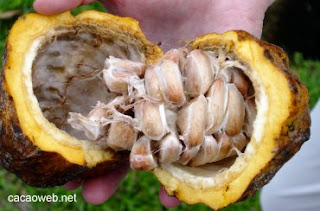What is Biodiesel?
Biodiesel is the name of a clean burning alternative fuel, produced from domestic, renewable resources. Biodiesel contains no petroleum, but it can be blended at any level with petroleum diesel to create a Biodiesel blend. It can be used in compression-ignition (diesel) engines with little or no modifications. Biodiesel is simple to use, biodegradable, non-toxic, and essentially free of sulphur and aromatics.
Why Biodiesel?
The use of blended Biodiesel in a conventional diesel engine results in substantial reduction of unburned hydrocarbons, carbon monoxide, and particulate matter. The use of Biodiesel decreases the solid carbon fraction of particulate matter (since the oxygen in Biodiesel enables more complete combustion to CO ), 2 reduces the sulphate fraction, while the soluble, or hydrocarbon, fraction stays the same or is increased.
What are the benefits?
Because it is renewable and domestically produced, Biodiesel fits well to help ensure reduced reliance on imported petroleum products with domestic alternative fuels. While its emissions profile is lower, Biodiesel functions in the engine the same as petroleum diesel with reduced emissions. Biodiesel can be substituted for diesel with essentially no engine modifications, and maintains the payload capacity and range of diesel.
Can I use Biodiesel in my existing diesel engine?
Biodiesel can be operated in any diesel engine with little or no modification to the engine or the fuel system. Biodiesel has a solvent effect which may release deposits accumulated on tank walls and pipes from previous diesel fuel storage. The release of deposits may clog filters initially and precautions should be taken. Ensure that only fuel meeting the Biodiesel specification is used.
Do I need special storage facilities?
In general, the standard storage and handling procedures used for petroleum diesel can be used for Biodiesel. The fuel should be stored in a clean, dry, dark environment.
Is Biodiesel safe?
Tests sponsored by the US Department of Agriculture confirm that Biodiesel is less toxic than petroleum diesel and biodegrades as fast as dextrose (a test sugar). In addition, Biodiesel has a flash point of over 150°C which makes it safer to store and handle than petroleum diesel fuel.
Has Biodiesel been thoroughly tested?
Extensive USA and European tests indicate that performance, fuel mileage and drivability with Biodiesel blends were similar to conventional diesel, but opacity levels were reduced and exhaust odour was less offensive. No adverse durability or engine wear problems were noted.
The Biodiesel industry also has commissioned more than 40 independent studies to research benefits ranging from improved lubricity to biodegradability.
Is Biodiesel the same thing as raw vegetable oil?
No! Biodiesel is produced from any fat or oil such as tallow, soybean and canola oil, through a refinery process called trans-esterification. This process is a reaction of the oil with an alcohol to remove the glycerin, which is a by-product of Biodiesel production. Fuel-grade Biodiesel must be produced to strict industry specifications (ASTM D6751) in order to insure proper performance. Raw vegetable oil cannot meet Biodiesel fuel specifications, it is not registered with the Department of the Environment & Heritage (DEH), and it is not a legal motor fuel.
Is Biodiesel used as a pure fuel or is it blended with petroleum diesel?
Biodiesel can be used as a pure fuel or blended with diesel petroleum in any percentage. In Australia, any Biodiesel must first meet the Biodiesel Standard, and subsequent blends with mineral diesel, must meet the Diesel Standard.
How do Biodiesel emissions compare to petroleum diesel?
In the US, Biodiesel is the only alternative fuel to have fully completed the health effects testing requirements of the Clean Air Act. The use of Biodiesel in a conventional dieselengine results in substantial reduction of unburned hydrocarbons, carbon monoxide, and particulate matter compared to emissions from diesel fuel. In addition, the exhaust emissions of sulphur oxides and sulphates (major components of acid rain) from Biodiesel are essentially eliminated compared to diesel.
Can Biodiesel help mitigate “global warming”?
A 1998 Biodiesel lifecycle study, jointly sponsored by the US Department of Energy and the US Department of Agriculture, concluded Biodiesel reduces net CO emissions by 2 78 percent compared to petroleum diesel. This is due to the closed carbon cycle of Biodiesel. The CO released into the atmosphere when Biodiesel is burned is recycled 2 by growing plants, which are later processed into fuel. Is Biodiesel safer than petroleum diesel? Scientific research confirms that Biodiesel exhaust has a less harmful impact on human health than petroleum diesel fuel. Biodiesel emissions have decreased levels of polycyclic aromatic hydrocarbons (PAH) and nitrited PAH compounds that have been identified as potential cancer causing compounds.
Test results indicate PAH compounds were reduced by 75 to 85 percent, with the exception of benzo(a)anthracene, which was reduced by roughly 50 percent. Targeted nPAH compounds were also reduced dramatically with Biodiesel fuel, with 2-nitrofluorene and 1-nitropyrene reduced by 90 percent, and the rest of the nPAH compounds reduced to only trace levels.
Who else can benefit from Biodiesel?
The reduction of our dependence on imported fuel and the introduction of a renewable technology benefit the entire country. The range of benefits includes:
- Growth in rural economies.
- Reduced dependence on imported fuel.
- Improvement in Australia's balance of trade.
- Massive reduction in greenhouse emissions.
- Reduction of sulphur dioxide, one of the main causes of acid rain.
- Reduction of other cancer causing emissions such as benzene.











